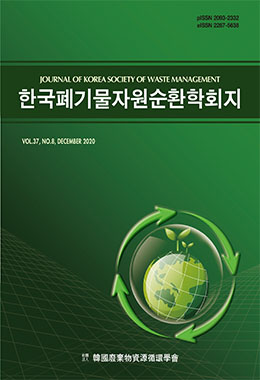The combustion characteristics of mixed fuels, consisting of bio-crude oil from coffee grounds and pyrolysis oil from polystyrene foam waste, were studied in a pilot-scale burner, along with blends of pyrolysis oil from polystyrene foam waste and kerosene. The used burner system was previously developed for bio-crude oil combustion; thus, it was equipped with an air-blast atomizing nozzle and adopted downward injection. The mixture of bio-crude oil from coffee grounds and kerosene exhibited a distinct phase separation and could not be placed into the burner directly. The bio-crude oil was heated before being supplied to the fuel nozzle due to its high viscosity, while the blends of pyrolysis oil from polystyrene foam waste did not require preheating because they were less viscous. Under atmospheric conditions, the pyrolysis oil from polystyrene foam waste was blended at least 50% to prevent incomplete combustion. The blends of bio-crude oil from coffee grounds and pyrolysis oil from polystyrene foam waste emitted relatively more NO due to the fuel-bound nitrogen in bio-crude oil. When kerosene was mixed with the pyrolysis oil from polystyrene foam waste, the flame temperature generally increased while the CO emission initially increased drastically and then decreased. The NO emission decreased with the kerosene mixing ratio, which might be attributed to the combined effect of fuel-bound nitrogen and other NO formation mechanisms.


